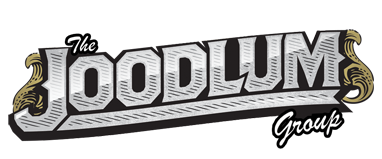As the weather finally takes a slow turn for the warmer I have found myself ready to trade steaming cups of morning coffee for the cooling, caffeinated pleasure of iced coffee. But while I may have previously considered myself an amateur coffee aficionado, only recently did I discover that not all iced coffee is created equal – and it often has more to do with technique than it does with beans. According to J. Park Brannen, the 2014 Northeast Regional Barista Champion and a sales rep and educator at Counter Culture Coffee, most commercial coffee shops use one of three different methods of brewing iced coffee, each of which has its advantages for the consumer or company and produces decidedly different results.
We visited Brannen at Counter Culture's training center to learn more about each of these three methods and put them to the test and see if we could reach a conclusion about which method is best.
The Slow Cool Method
Who Uses It?
The most common method of making iced coffee is employed by such large chains such as Dunkin' Donuts, Starbucks, and McDonald's.
How Does It Work?
Probably the simplest method of the three—simply brew hot coffee, let it cool naturally and add ice. Brannen has casually dubbed this "The Slow Cool Method," but I like to alternatively call it "The 'Shit, I Forgot I Made Coffee And Now It's Room Temperature' Method."
What Does It Taste Like?
To demonstrate this method, we used Counter Culture's Idido, a single origin coffee named after the village in Yrgacheffe, Ethiopia, from which the beans come. When prepared properly, Idido is bright and delicious with big notes of melon, orange blossom, and citrus. When left out for a few hours and then iced, it tastes of all those things – if they were wrung from a wet newspaper.
This method exposes the coffee to the open air for the longest amount of time causing oxidation. Exposure to oxygen is actually what causes your coffee to get stale—the electrons of oxygen transfer to the molecules of the delightful oils and proteins in the coffee, forming new compounds that result in rancid off-flavors. But all you really need to know is that when compared to the methods below, over-oxidized coffee tastes – quite honestly – like crap.
Cold Brew Method
Who Uses It?
Boutique coffee roasters like as Blue Bottle and Stumptown, as well as brewer-bottlers such as Grady's and Chameleon who pre-package cold brew concentrate to sell in gourmet markets such as Whole Foods.
How Does It Work?
As Brannen describes it, "cold brewing is a process in which you add room temperature water to coarsely ground coffee, and let it steep from six to 24 hours. Then there are a variety of methods by which you can strain it, to separate the liquid from the grounds." What you are left with is coffee concentrate, which you dilute with cold water to taste. While not particularly labor-intensive, making cold brew generally requires special equipment like a Toddy brewer.
What Does It Taste Like?
We tested this method with Counter Culture's Hologram, a year-round blend of Peruvian and Ethiopian beans with a fruit-forward and chocolaty taste. The extract alone tasted too intense, but diluting it a bit allowed us to parse out the flavors. The main advantage of the cold brew method according to Brannen is that it is impossible to over-extract. “You're never gonna get a lot of harsh, bitter flavors [from cold brew]."
One potential downside to the method, depending on your taste, is that cold brewing magnifies the chocolate tastes in a coffee tenfold. That leaves most cold brews with a similar flavor profile regardless of which beans are used. But if you want a chocolaty cup of coffee cold brew is for you.
Japanese Method
Who Uses It?
The people of Japan, Counter Culture Coffee, and, once you read what's below, YOU.
How Does It Work?
The barista adds ice to whatever carafe he is brewing into and then filters hot coffee directly on to the ice. The process simultaneously cools the concentrated liquid and adds the remaining amount of water necessary. The golden ratio for perfectly brewed coffee is 60 grams of coffee per liter of water. So to make iced coffee Brannen divides his water evenly between liquid and solid—500 ml of hot water and 500 grams of ice. He also recommends using small pebble ice or crushed ice when brewing (the increased surface area will bring the solution down to temperature quickly) but serving the coffee on larger block ice (to avoid excessive melting and further dilution).
What Does It Taste Like?
As with the slow cool method we brewed with Idido, but instead of an oxidized newspaper taste, we quickly picked up on the delicate brew’s herbal – almost tea-like – quality, as well light citrus and lemon notes. It was easily the most flavorful cup we had that day.
"I prefer [this method] because…hot water extracts solubles from the ground coffee material more thoroughly than cold water does," said Brannen. "It's much more telling of origin and of terroir than the cold brewing method, which homogenizes most of the flavor."
The Verdict
With the Japanese method, one can bypass brewing and cooling, or steeping and steeping, and ice their coffee in under four minutes. Does that mean it's the fastest way to make iced coffee? "Yeah," Brannen says with a shrug. "I feel comfortable saying that."
After getting a crash course in iced coffee, I think the choice for the home brewer is a no-brainer. Don't let a little extra frozen water scare you off from brewing the tastiest iced coffee you'll ever have in your life.

